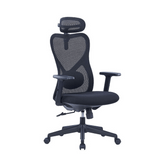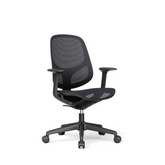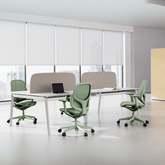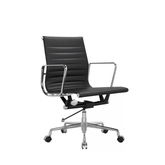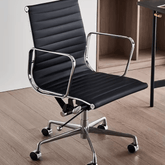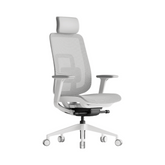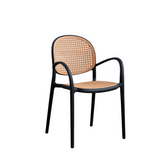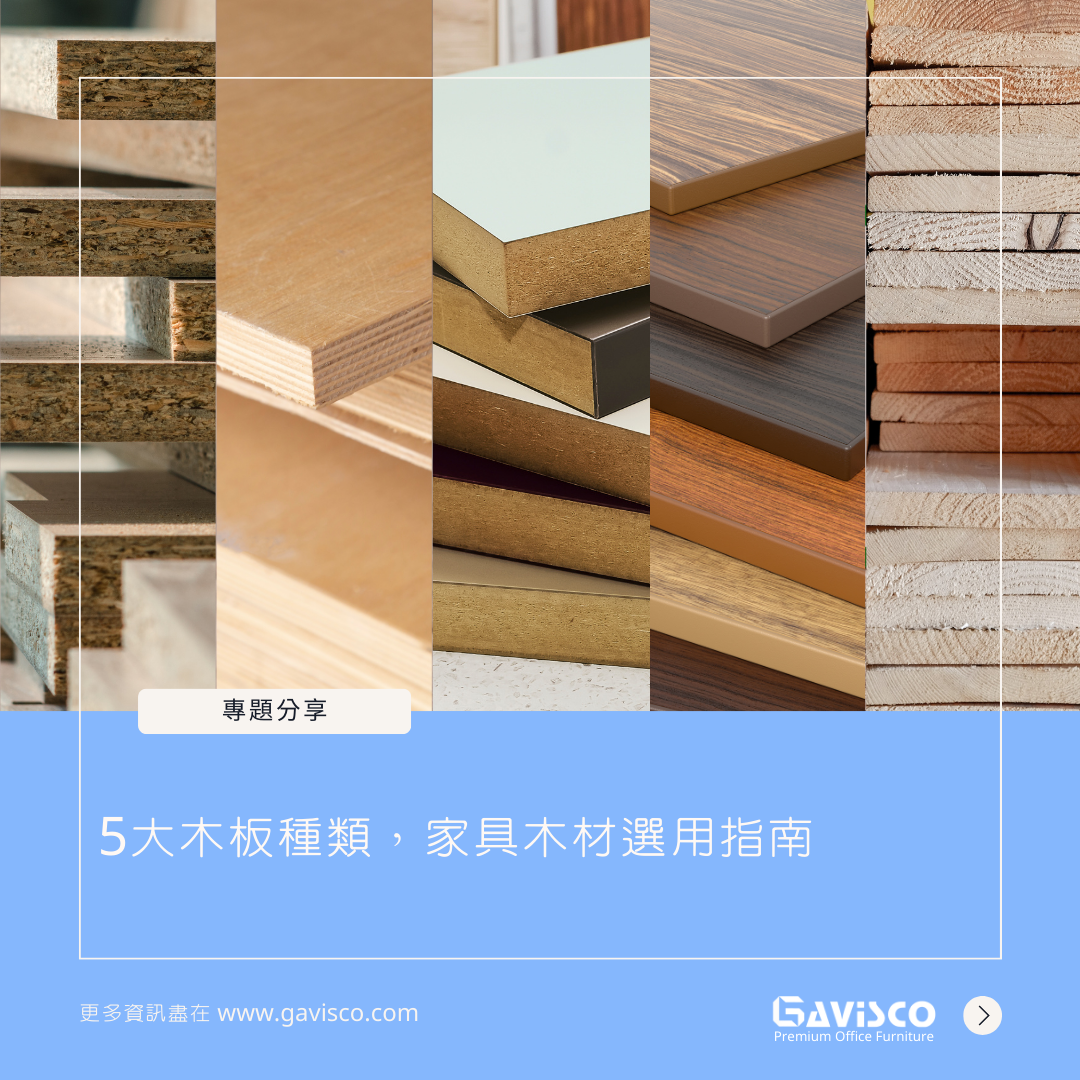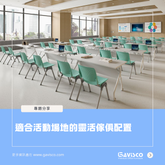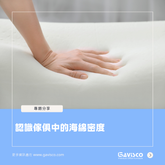Table of Contents
- Introduction
- Plywood
- Medium Density Fibreboard (MDF)
- Chipboard / Particle Board
- Solid Wood
- Wood Veneer
- Conclusion
Introduction
When selecting office furniture, we often focus too much on appearance and comfort, overlooking a crucial element: the wood. The type of wood used in furniture directly affects its quality, durability, and environmental friendliness. Different woods have distinct characteristics, and understanding these differences will help us make informed choices to meet our needs and preferences. In this article, we will discover the types of wood used in furniture, their unique characteristics, and how to select the best one for your needs and preferences. Explore the various types of wood used in furniture, their features, and pros and cons to help you make wise decisions when purchasing furniture.
Plywood
Price: High
Pros: Strong load-bearing capacity, good moisture resistance, less prone to deformation
Cons: Rough surface, requires additional finishing processes (e.g., painting)
Plywood is one of the most commonly used materials in furniture making and interior design. It is made by stacking and pressing multiple layers of thin wood veneers, with each layer's grain direction perpendicular to the next. This cross-grained structure gives plywood excellent strength and stability.
Types of Plywood
Plywood is divided into two main types: thin core and thick core. Thin core plywood is made by laminating several layers of thin wood veneers, while thick core plywood consists of a core made of bonded wood strips sandwiched between two thin veneers. Both types are quite hard and less prone to deformation compared to other materials. Plywood thickness is measured in millimeters, with common thicknesses being 3mm and 18mm.
Characteristics
- Strength and Stability: The cross-grained structure provides excellent strength and resistance to bending, making plywood less prone to deformation.
- Durability: Its robust structure allows it to withstand significant weight and pressure, making it more durable than other materials.
- Moisture Resistance: The adhesive used in plywood prevents moisture penetration, making it suitable for humid environments.
- Ease of Processing: Plywood's smooth surface and consistent thickness make it easy to cut, drill, sand, and process, offering flexibility in furniture making and interior design.

Medium Density Fiberboard (MDF)
Price: Medium
Pros: Smooth surface, easy to apply finishes
Cons: Moderate load-bearing capacity, prone to swelling when wet, heavy
Medium Density Fibreboard (MDF) is made from wood fibers and adhesive, typically under high temperature and pressure. It is a popular material for furniture and interior design due to its smooth surface, which allows for easy finishing.
Advantages
- Smooth Surface: MDF's smooth surface is ideal for various finishes, providing a uniform base for a high-quality appearance.
- Ease of Processing: MDF is easier to cut and shape than solid wood, making it suitable for custom furniture and decorations.
- Versatility: MDF can be easily molded into curves and complex shapes.
Disadvantages
- Moisture Sensitivity: MDF is sensitive to moisture and can swell when exposed to humid environments.
- Lower Load Capacity: MDF has a lower load capacity than plywood and solid wood.
- Formaldehyde Content: The adhesives used in MDF may contain formaldehyde, affecting indoor air quality.

Chipboard / Particle Board
Price: Low
Pros: Smooth surface, easy to apply finishes
Cons: Poor load-bearing capacity, prone to deformation, weak screw holding
Chipboard, also known as particle board, is made from wood chips and adhesive. It is an affordable option for low-cost, mass-produced furniture and decorations.
Advantages
- Low Cost: Chipboard is inexpensive, as it uses recycled wood chips.
- Smooth Surface: Chipboard can be easily finished with paint or veneer.
- Eco-Friendly: Chipboard often uses recycled materials, offering environmental benefits.
Disadvantages
- Poor Load Capacity: Chipboard is not suitable for high-load applications due to its tendency to bend and deform.
- Moisture Sensitivity: Chipboard is sensitive to moisture and can swell when exposed to humid environments.
- Weak Screw Holding: Chipboard's structure results in weaker screw holding, affecting product stability.
- Formaldehyde Content: The adhesives used in chipboard may contain formaldehyde, affecting indoor air quality.

Solid Wood
Price: Expensive
Pros: Solid, high quality, smooth, natural
Cons: Expensive, requires maintenance
Solid wood is the most premium material used in furniture making, known for its strength, durability, and natural beauty. It is crafted from whole logs, providing a smooth and high-quality finish.
Advantages
- Strength and Durability: Solid wood is incredibly strong and can last for generations with proper care.
- Natural Beauty: Each piece of solid wood furniture is unique, showcasing the natural grain and character of the wood.
- High Quality: Solid wood is considered the highest quality material for furniture, offering a luxurious and timeless appeal.
Disadvantages
- Cost: Solid wood is more expensive than other materials due to its quality and the craftsmanship involved.
- Maintenance: Requires regular maintenance to preserve its appearance and prevent damage.

Wood Veneer
Price: Low to Medium
Pros: Durable, cheap, long-lasting, natural texture
Cons: Price varies greatly, sensitive to humidity and temperature changes
Wood veneer is made from thin slices of real wood that typically are glued onto core panels, typically using core panels like particle board or medium-density fiberboard. Used in furniture, interiors, packaging, and crafts. It is more expensive than engineered wood and chipboard due to the use of real wood and intricate processing.
Advantages
- Durability: Wood veneer is made from real wood, offering excellent durability and resistance to wear and tear.
- Natural Texture: Wood veneer retains the natural grain and beauty of wood, providing a unique and warm appearance.
Disadvantages
- Price Variation: The price of wood veneer varies greatly depending on the wood type and rarity.
- Sensitivity to Environment: Wood veneer is sensitive to humidity and temperature changes, which can cause slight deformation or cracks.

Conclusion
Internal boards are commonly used materials in furniture and construction for making frames, support structures, and other internal components. The quality of these materials varies, with solid wood being the highest quality, followed by plywood, MDF, and chipboard. Understanding these differences will help you make informed choices to meet your needs and preferences.
